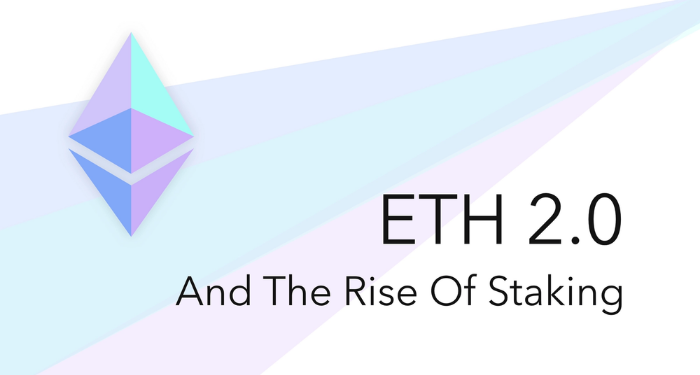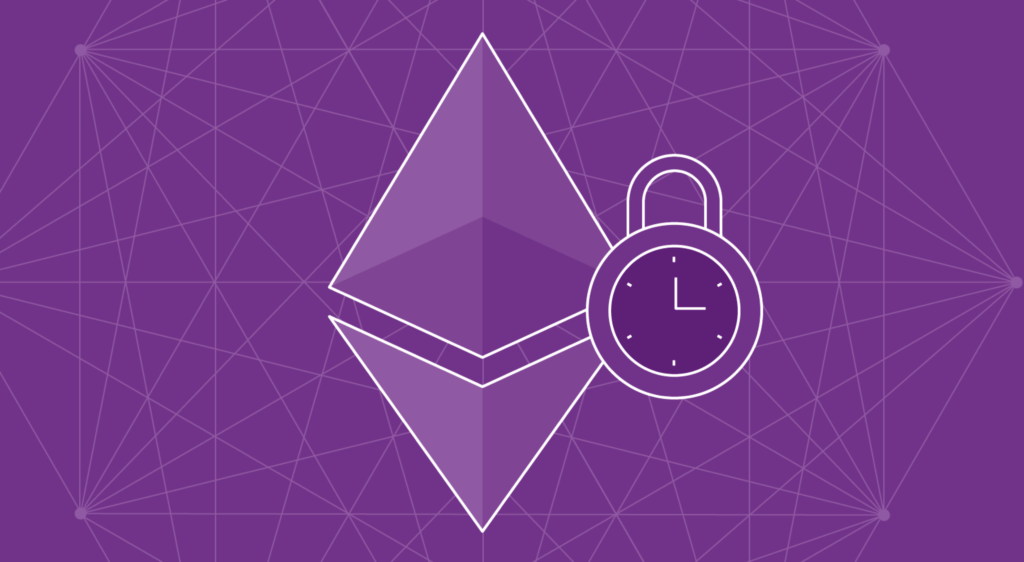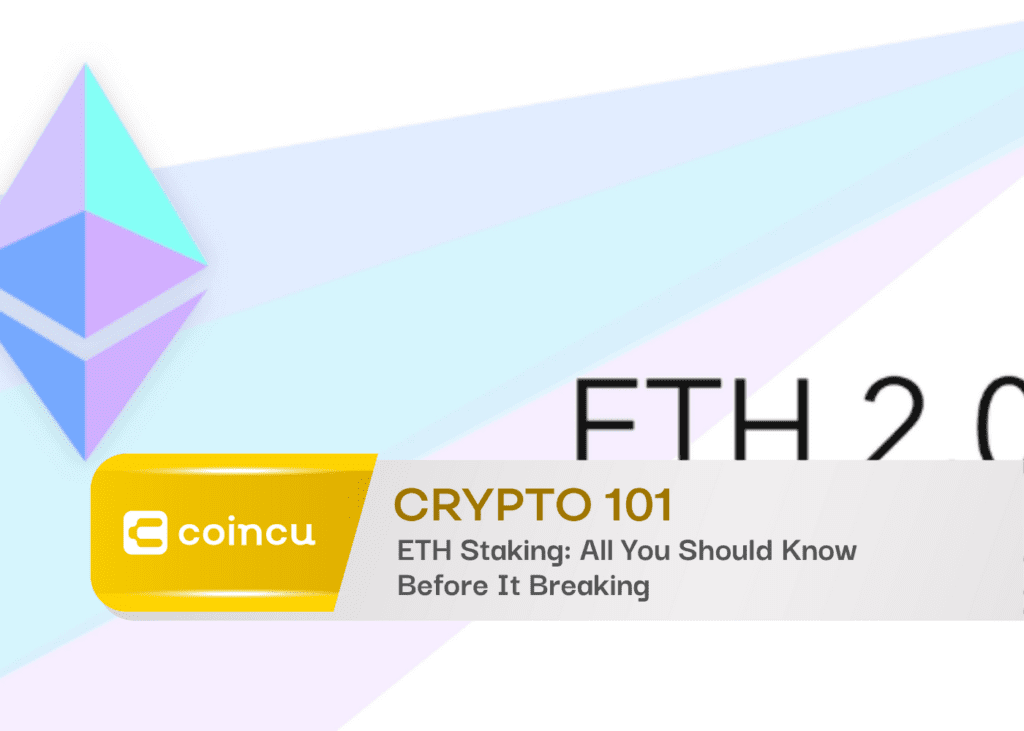Ethereum’s move to Proof of Stake since The Merge has promised to make ETH the most important source of profit in DeFi. In practice, however, this can be complicated for crypto users. Fortunately, there are many staking platforms that make placing bets easie.

Especially since the successful The Merge in September 2022, Ethereum is predicted to have great developments in the coming years. As early as 2023, the network will update the Shanghai upgrade. After the upgrade, it will make it possible for investors to cancel staking ETH. As such, Bitwise has predicted the volume of ETH staking could increase by at least 50%.
In this post, we will explain to you what ETH staking is, how to stake ETH, and what staking platforms are available.
What is ETH staking?
Staking is the act of holding and locking a certain amount of coins in order to receive rewards from them. These coins can be locked in the wallet or nodes of a Blockchain project for a period of time. The reward will be based on the user’s effort, including: stake amount and stake duration.
Proof of Stake is the consensus algorithm in Blockchain. In it, participants will stake their coins (staking coins) into the Blockchain network to validate transactions and generate new blocks. Rewards (including block rewards and transaction fees) will be given to PoS participants as an incentive for their contributions.
After The Merge, you stake ETH and get extra ETH to validate transactions on the blockchain.
Binding when ETH Staking
As we all know, the birth of ETH 2.0 will convert to using PoS consensus algorithm instead of PoW as before. To get started with PoS, users need to staking ETH on the network to gain the right to become validators. However, depending on the form you join, there will be different requirements. But in general, it is easy to see that there are two main factors that you should pay attention to.
Lock the amount of participating ETH

Staking ETH will lock ETH from 1-2 years. It is common sense that ETH staking can happen at any time. And of course, when you no longer need to participate, you can withdraw as you please. However, in this Phase 0, your ETH will be “locked up” until at least the end of Phase 1.5. Simply put, you will have almost nothing to do with the amount of ETH participating in the ETH staking during that time.
Although you still receive interest as well as transaction validation fees, etc. during that time, it is not without risk. What I want to talk about here is the issue of Ether price fluctuations. What if it suddenly increases in price and you want to take profits? Or it suddenly fell deeply and you want to cut your losses? There’s definitely nothing you can do about it.
Think of it as a savings. And after 1-2 years you can take it out. At that time, the price increase or decrease will depend on the market. So if you intend to ETH staking in the short term, make sure you think carefully about this issue.
Validator activity on the network
You must have heard many stories of you staking ETH on the network and getting rewards. But the interesting thing is that if you don’t perform well, you also have to pay a penalty from the network. This is mainly to eliminate validators who are against the network or participate in a superficial way that makes the network not work as expected.
Participating in staking ETH, the validator may be penalized if it is against the network. There are two things that you need to keep in mind when you want to become a validator of the network. Specifically:
- You may get a slash for a number of reasons such as Attestation Violation, Proposer Violation: As a result, not only do not receive income for the day, but also have money deducted. If the condition persists, you may be forced out of the network.
- You may be penalized for being offline: Being a validator means you have to be online all the time to keep the network up and running. However, in case you are not able to go offline often, you will also incur a small penalty. It will directly affect the amount of daily profit you get. The higher the level of offline commitment, the greater the profit, and vice versa. For example if same amount 32 ETH, if online time is 100%, validator can get $12.22/day. But if it’s only 50%, you’ll even be charged.
However, you do not need to worry too much about this. There is still a way for you to participate in staking ETH 2.0 without the penalty mentioned above. For details on this, please refer to the risk reduction section in this article.
How to stake ETH?
You have several options when it comes to ETH staking.
- Staking on your own: You need at least 32 ETH to activate Ethereum validator software. That ETH will be locked up until withdrawals are enabled with Ethereum’s Shanghai update (expected in 2023). You’ll also need a dedicated computer with a 24/7 internet connection and some technical skills.
- Staking as a service: You still need 32 ETH but the staking service will take care of running the validator node. Some of the services even let you use your own keys.
- Pooled liquid staking: You can stake any amount in the staking pool. The pool operator runs validators and distributes staking rewards proportional to everybody’s contribution. Some of the staking pools issue ‘liquid’ tokens that represent your staked ETH.
For any active Web3 user, pooled liquid staking is arguably the most interesting option because it gives the greatest flexibility.
You can sell these tokens and effectively exit staking. Or you can use these liquid tokens in DeFi: to provide liquidity on DEXes, earn with Yearn vaults, deposit on Aave, and more. Alternatively, you can use these liquid tokens as collateral and borrow other tokens.
Where can you staking ETH?
Lido
Lido is a set of staking protocols on several networks, most important on Ethereum.
When you deposit ETH into Lido’s smart contract, you get stETH, an ERC-20 token that represents your staked ETH, rewards, and any penalties. This token is freely transferable and you can use it in any DeFi application. Besides, ETH you can also stake MATIC with Lido.
Lido applies a 10% fee on all rewards. The fee is split between the node operators, the Lido DAO, and a coverage fund for any slashings. Volume of staked ETH is about 4,600,000. Rewards will be accumulated in liquidity tokens.
Lido relies on a curated list of node operators, which includes mostly large operators. stETH is by far the largest liquid-staked ETH token. It’s widely used in DeFi applications.
Rocket Pool
Unlike Lido, Rocket Pool lets anyone to run a validator.
Instead of providing 32 ETH, a validator with Rocket Pool needs 16 ETH and 16 ETH worth of RPL, the Rocket Pool token. Besides earning a yield on their own ETH, validators also earn commissions and rewards in RPL. This leads to a higher yield than staking solo.
The rest of the required ETH comes from liquid stakers. Like with Lido, you can stake any amount of ETH and get a liquid staked rETH token.
Rocket Pool charges a fee of 5-20%, which is set by the protocol and goes to validators. Volume of staked ETH is about 360,000. Rewards will be accumulated in the liquid token.
StakeWise
StakeWise is a pool where anyone can apply to become a node operator.
You can deposit any amount of ETH with StakeWise and get 1:1 sETH2, the protocol’s liquid-staked ETH token.
Unlike in other protocols, the staking rewards accumulate in a separate token, rETH2. The two tokens make it easier to calculate your rewards. You can also reinvest the rewards by selling them for more sETH. Both tokens can be supplied in Uniswap pools to farm SWISE, the platform’s governance token.
StakeWise charges a fee of 10%, which is split between the protocol and node operators. Volume of staked ETH is about 83,000. Rewards will be accumulated in a separate liquid token.
Notes when participating in ETH staking service
Firstly, you should choose a reputable staking service: Participating in staking ETH 2.0 in this form is your assignment of your money to others. So choose a reputable partner that is well-reviewed. There are many services of this type open in the market. Do not be greedy for high profits but ignore the risk factor it brings. However, we recommend choosing service providers as suggested by Ethereum’s own baconcha platform.
Second, the investment should be evenly distributed: There is no guarantee of absolute safety at all times. So, to limit your risk, you can split your investment among many staking service providers. Thus, if the risk of having a certain supplier affected, you do not lose everything. But in return, it will directly affect your profit. So please consider this issue carefully.
Conclusion
ETH staking earns a diversified yield of at least 4% a year. Profits are paid in ETH, so if you are calculating profits in USD or other fiat currencies, the actual return will depend on the price of ETH. However, ETH staking is arguably the least risky source of profit in Web3. Therefore, this can be a great opportunity for investors.
We hope that our above article will be useful to you. Please leave your contributions in the comments section to improve our article.
DISCLAIMER: The Information on this website is provided as general market commentary and does not constitute investment advice. We encourage you to do your own research before investing.
Join us to keep track of news: https://linktr.ee/coincu
Website: coincu.com
Foxy
Coincu News





